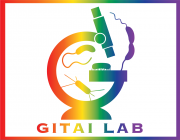Both clinical and environmental Caulobacter species are virulent in the Galleria mellonella infection model
Publication Year
2020
Type
Journal Article
Abstract
The Caulobacter genus, including the widely-studied model organism Caulobacter crescentus, has been thought to be non-pathogenic and thus proposed as a bioengineering vector for various environmental remediation and medical purposes. However, Caulobacter species have been implicated as the causative agents of several hospital-acquired infections, raising the question of whether these clinical isolates represent an emerging pathogenic species or whether Caulobacters on whole possess previously-unappreciated virulence capability. Given the proposed environmental and medical applications for C. crescentus, understanding the potential pathogenicity of this bacterium is crucial. Consequently, we sequenced a clinical Caulobacter isolate to determine if it has acquired novel virulence determinants. We found that the clinical isolate represents a new species, Caulobacter mirare that, unlike C. crescentus, grows well in standard clinical culture conditions. C. mirare phylogenetically resembles both C. crescentus and the related C. segnis, which was also thought to be non-pathogenic. The similarity to other Caulobacters and lack of obvious pathogenesis markers suggested that C. mirare is not unique amongst Caulobacters and that consequently other Caulobacters may also have the potential to be virulent. We tested this hypothesis by characterizing the ability of Caulobacters to infect the model animal host Galleria mellonella. In this context, two different lab strains of C. crescentus proved to be as pathogenic as C. mirare, while lab strains of E. coli were non-pathogenic. Further characterization showed that Caulobacter pathogenesis in the Galleria model is mediated by lipopolysaccharide (LPS), and that differences in LPS chemical composition across species could explain their differential toxicity. Taken together, our findings suggest that many Caulobacter species can be virulent in specific contexts and highlight the importance of broadening our methods for identifying and characterizing potential pathogens.
Keywords
Journal
PLoS One
Volume
15
Issue
3
Pages
e0230006
ISSN Number
1932-6203
Alternate Journal
PLoS ONE
PMID
32163465

